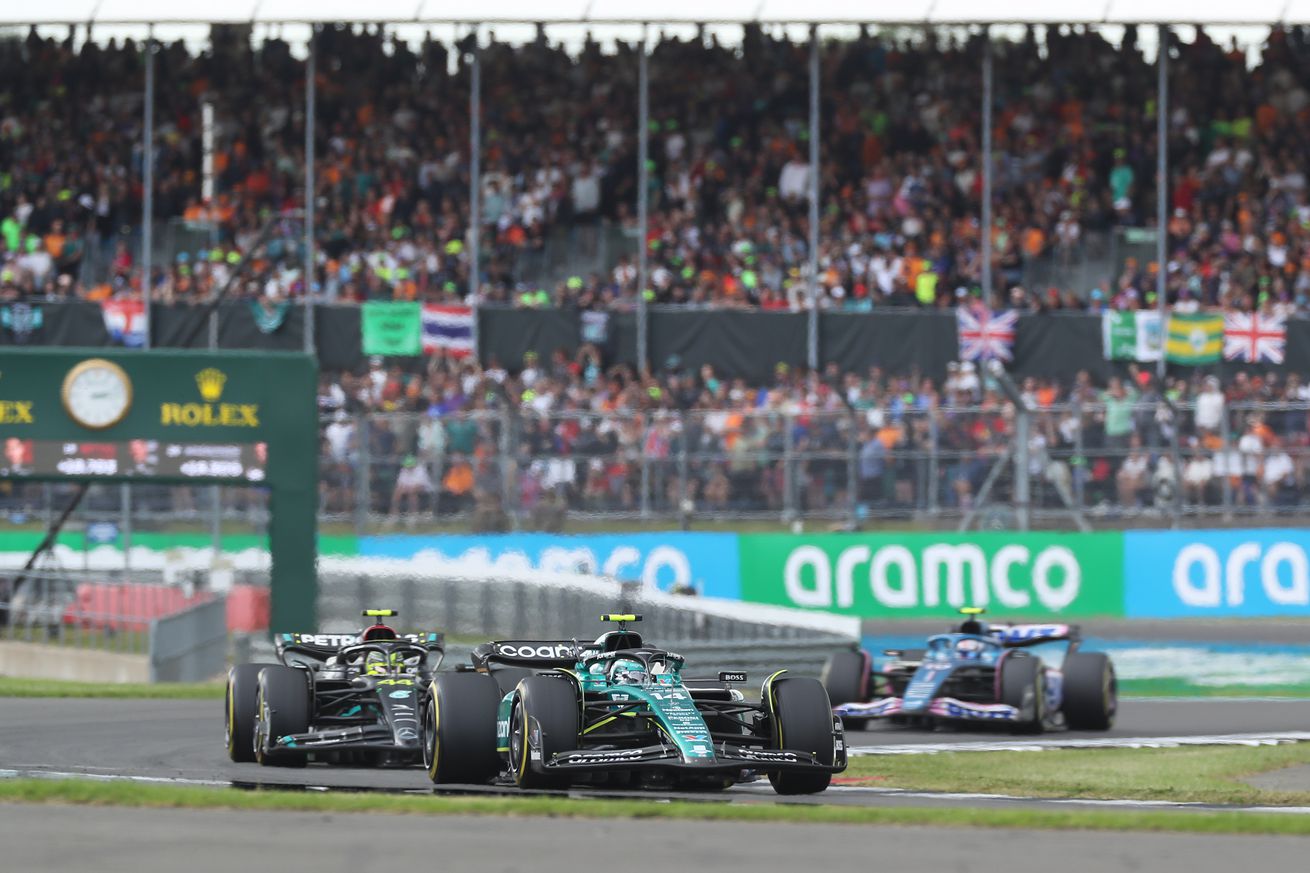Photo by Peter Fox/Getty Images
After a dream start for Aston Martin, what comes next?
Things are never dull in Formula 1.
This was supposed to be a quiet week off, following a back-to-back in Austria and Britain, and ahead of another back-to-back in Hungary and the Netherlands. But a thunderbolt from the clouds came down on Monday, with the shocking news that Daniel Ricciardo was coming back to the grid.
After just ten races, AlphaTauri and Red Bull had seen enough from Nyck de Vries. The rookie was out, and Ricciardo was in, on loan to AlphaTauri starting with the Hungarian Grand Prix.
Still, with F1 on a bye week following the British Grand Prix it is time to take stock of just where each of the ten teams are ahead of Budapest. Working through the field from the bottom of the Constructors’ standings to the top, what is the biggest question facing each team right now?
We have already looked at seven teams, starting with AlphaTauri and working up to Ferrari. The next stop on our virtual walk through the grid? The darlings of this spring: Aston Martin.
Did they squander their early advantage?
Photo by Vince Mignott/MB Media/Getty Images
Aston Martin had three advantages heading into the 2023 F1 season.
Have they squandered two of them?
The third advantage they had entering the year — veteran driver Fernando Alonso — is still trucking along, sitting third in the Drivers’ standings and showing he can be competitive at the front this season. The biggest question regarding Alonso is if he can secure that elusive 33rd-career victory at some point this season.
But the other two advantages underpin the one big question facing Aston Martin right now.
One such advantage? Their allotment of testing time under F1 regulations. Under F1 rules, aerodynamic testing restrictions (ATR) are determined by how teams finish the previous season, and how they stand on June 30th.
Thanks to their seventh-place finish last year, Aston Martin entered the 2023 season with a full allotment of testing time available. As noted in this piece from RaceFans, a team with that finish “receives 100% of the permitted wind tunnel and computational fluid dynamics development time. This is equivalent to 320 wind tunnel testing runs and 2,000 aerodynamic test geometries for restricted computation fluid dynamics simulations.”
Teams that finished behind them — Haas, AlphaTauri, and Williams — received above 100% of the ATR.
That gave Aston Martin a big advantage coming into the season, particularly over two teams they are currently battling with on the track and in the standings: Mercedes and Ferrari. And in their own words, they put that to good use. “It’s definitely an advantage, we try to use it as much as we can,” Aston Martin performance director Tom McCullough said back in April.
“The more time you have, the more sessions you do and the more things you can analyse. We are every week in the wind tunnel looking for development avenues that can bring significant performance, keeping the cost ceiling in mind.”
Another advantage? Dan Fallows.
Fallows was once a member of Red Bull’s aerodynamics department and served as the team’s Head of Aerodynamics from 2014 through 2021. But in June of 2021, it was announced that he would be joining Aston Martin as their Technical Director, starting in April of 2022.
That meant that the first Aston Martin design with his full input was this year’s.
We saw that early, pointed out by none other than Horner. When Alonso finished on the podium in the season-opening Bahrain Grand Prix along with Max Verstappen and Sergio Pérez, Pérez quipped that it was “nice to see three Red Bulls on the podium.” Horner himself joked that it was “good to see [an] old Red Bull car also on podium.”
However, while those early advantaged helped them at the start of the season, things are about to change. As noted above, ATR is recalculated on June 30th, and as you can see from this table put together by The Race, life is about to change for Aston Martin:
This means that over the back half of the season, their testing time is going to be limited. So if they pressed their advantage early in the year, they might be hamstrung in what they can do in the second half of the season.
How does the team handle this, given the fact that it looks at the moment as if teams are catching up?
How the team answers that question will not only determine whether they squandered early advantages, but it might determine the overall arc of their 2023 F1 campaign.













